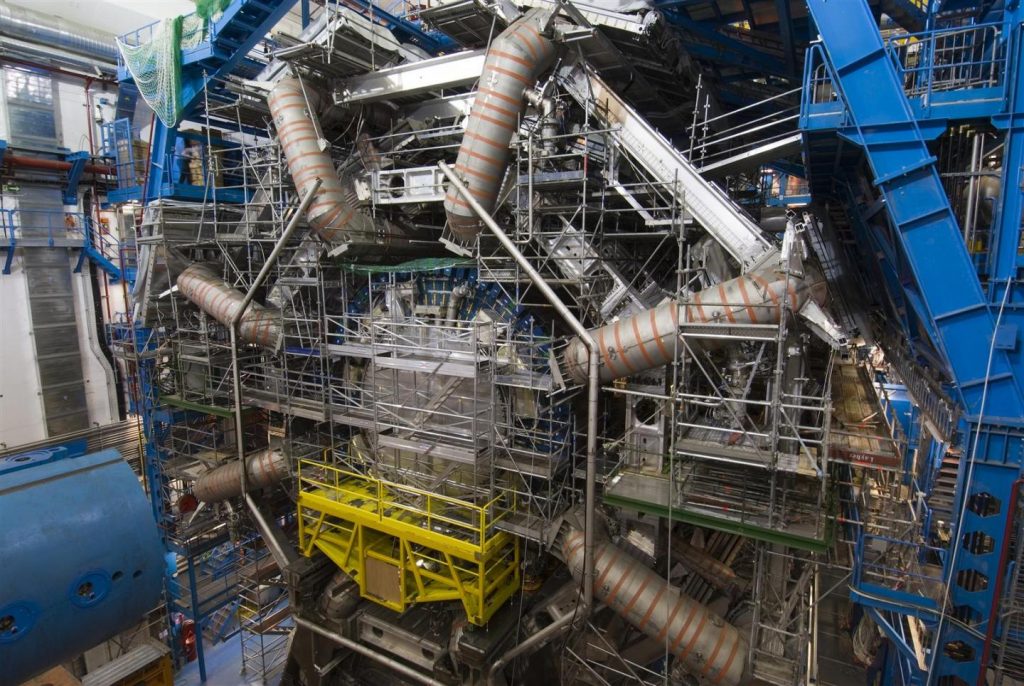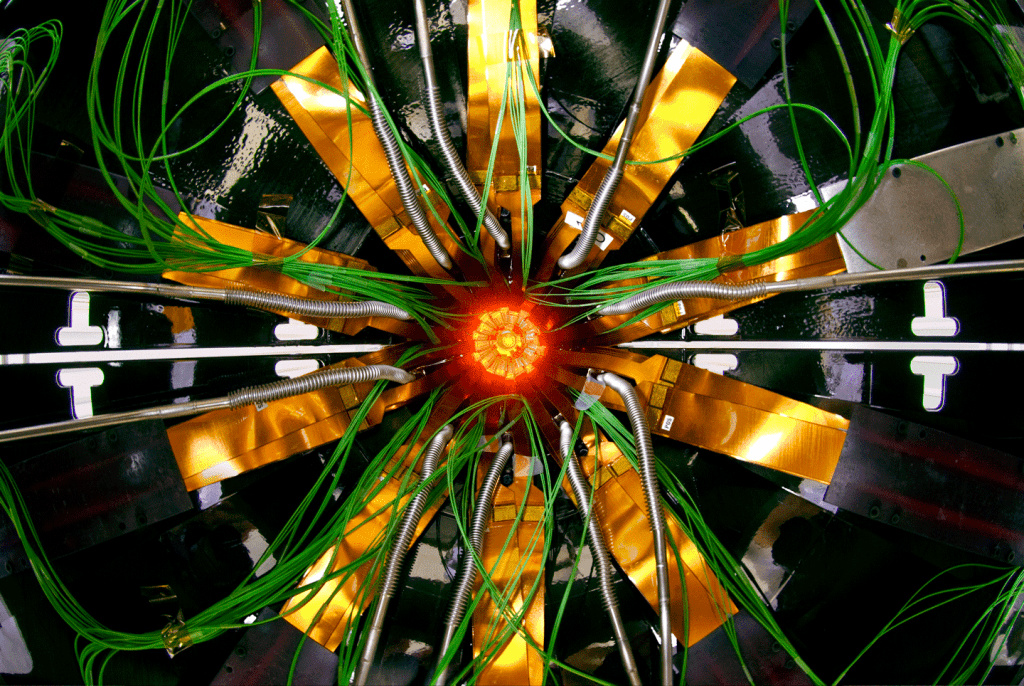Last Updated on March 24, 2017 by Editor Futurescope
The Large Hadron Collider (LHC) is the world’s largest particle accelerator. In this experiment, physicists from the European Laboratory of Particle Physics (CERN) collide among themselves subatomic particles (mainly protons, one of the constituents of the atom nucleus) at selected points where large detectors are located (ATLAS, CMS, LHCb and ALICE). These record the particles resulting from the collisions to study the elements that make up the matter of which the Universe is made that is particle of God, including ourselves, and their interactions.


Large Hadron Collider (LHC)
Located on the Franco-Swiss border near Geneva, the LHC is a ring 27 kilometers in circumference located 100 meters underground. It is one of the most complex machines ever built: its 9,300 superconducting magnets, fundamental for rotating beams of particles at speeds close to those of light, as cooled to a temperature lower than that of outer space (-270 degrees centigrade, near Of absolute zero); The inside of the ring is the hollowest place in the Solar System (10-13 atmospheres) to prevent particles from colliding with gas molecules; And when the particles collide with each other they generate temperatures 100,000 times hotter inside than the Sun.


After its inauguration in 2008, the Large Hadron Collider (LHC) began its current operating period at the end of 2009. At the end of March 2010 it reached the 7 TeV (teraelectronvoltios) of collision energy between particles, the highest recorded in an experiment of this type. In 2013-2014, the LHC is undergoing maintenance and updating during its first long technical stop. As of 2015, collisions will begin again, gradually reaching the energy for which it is designed, 14 TeV.
The Large Hadron Collider (LHC) will remain operational for at least 15 years. At that time, scientists hope to obtain enough data to deepen the knowledge of the origin and formation of the Universe. A major step in this direction has been the discovery of the Higgs boson, the particle associated with a new force field in Nature (called the “Higgs field”) that would explain the origin of the mass of the elementary particles ….. …..
What is the particle of God? Do you know that it could destroy the Universe?
New York physicist Richard Feynman once said, probably summarizing a Taoist saying: “If you think you have understood quantum mechanics, you have not understood it”; And although this is not completely true for quantum mechanics, as he himself sought to reverse this misunderstanding through scientific outreach, it could be partly for the Higgs boson, also known as the particle of God. In this article we will try a simple approach to this complex subject, which could also constitute a threat to the universe.
What is the particle of God? Do you know that it could destroy the Universe?
In the early 1960s, physicists around the world attempted to create a standard model of particle physics, describing the behavior of these indivisible elements that make up protons and neutrons. By together with electrons make up atoms, that In turn are the basis of all matter. But there was a problem: these elemental particles, known as quarks, are not equal in the amount of mass they possess, and there are disproportions among some of them as there might be between a sardine and a whale. Logically, the question arose as to what determined the mass of the particles.
In 1964, several physicists proposed similar theories to explain these differences in mass between different quarks, among them the physicist Peter Higgs, who proposed the existence of a field with which particles would interact and determine their mass. This field or mechanism was baptized with the last name of the British physicist, and its smaller manifestation would come to be the Higgs boson, also known like the particle of God.


The Higgs field remained in the range of theories or predictions until between 2012 and 2013, and thanks to the large hadron collider of CERN (Switzerland), it was possible to verify the existence of a particle that would behave according to all the predictions that were made on the Higgs boson.
As a result of these experiments, Higgs and physicist François Engler received the Nobel Prize for Physics in October 2013: “for the theoretical discovery of a mechanism that contributes to our understanding of the origin of the mass of subatomic particles, and which was recently Confirmed by the discovery of the predicted fundamental particle, by the ATLAS and CMS experiments in the CERN Large Hadron Collider.”
Why baptize it as the particle of God? Beyond that without the existence of this boson there would be no matter, the name arose from a kind of misunderstanding. In 1993 Nobel laureate Leon Lederman, together with the scientific publisher Dick Teresi, published a book on the history of physics entitled The God Particle: If the Universe is the Answer, What is the Question? If the universe is the answer, what is the question?); the original title of the book, which proved to be an editorial success, proposed by the authors was The Goddamn Particle, “the damn particle”, for the enormous difficulty of confirming its existence, but the editors insisted on changing the name.
Both Peter Higgs, who is not a believer, as many physicists dislike this name for the boson, because it lends itself to theological confusions and is considered a little sensational. In contrast, the celebrated physicist Stephen Hawking may like this denomination. Since it would fit the apocalyptic panorama that has suggested around this particle. Hawking and his team assume that the Higgs field, which emerged at the birth of the universe, could be subject to a dynamic between the intensity of the field and the energy it needs to generate to maintain itself, and that this dynamics could lead to a very, very distant future. To a kind of quantum vacuum bubble that could spread at the speed of light and quickly end this universe. Of course it would not be an imminent event, as it would take a collider the size of Earth to generate that extreme amount of energy. For Hawking, however, the finding of particle of God has been disappointing, because according to him, “physics would be much more interesting if it had not been discovered.”
For theoretical physicists like Joseph Lykken of the Fermi National Accelerator Laboratory in Batavia (Illinois, USA), we could find ourselves on the borderline between a stable universe and an unstable universe. Our space-time would exist on the edge of a razor.
Frightened by this new version of the end of the world, that is, the universe? You should not, it’s just a theory (it would not be the first discarded by Hawking and other physicists), and something that could happen in several billions of years. And perhaps it is you, and each one of us, that elusive and disturbing particle of God.









